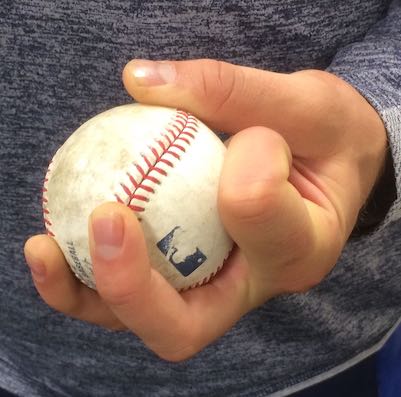These are notes on prospects from lead prospect analyst Eric Longenhagen. Read previous installments here.
Cole Tucker, SS, Pittsburgh Pirates
Level: Triple-A Age: 22 Org Rank: 5 FV: 50
Line: 3-for-5, HR, 2 SB
Notes
Readers are often looking for a prospect outside the top 50 who might break out and move near the top of our overall list. My answer to that question is typically some big, projectable teenager who I expect to experience sizable physical growth. Tucker is rare in that he’s also a viable answer to this question even though he turns 23 this summer. Having answered once-relevant, shoulder-related questions about his arm strength, Tucker is now seen as a plus-gloved shortstop who has good feel for contact. But because he still has this big, seemingly unfinished frame on him, we think it’s possible that he comes into power a little late, and he might take a sizable leap. A source indicated to me that Tucker looks noticeably bigger and stronger this year. He hit for power during the first week of the season, and his batted ball data should be monitored for a possible indicator that he’s made a mechanical adjustment, too.
Tarik Skubal, LHP, Detroit Tigers
Level: Hi-A Age: 22 Org Rank: HM FV: 35
Line: 6 IP, 2 H, 1 BB, 1 R, 6 K
Notes
Kiley saw Skubal last night and had him up to 97, with an average breaking ball. A possible second or third rounder as a college underclassman, Skubal’s amateur career was derailed by an elbow injury that required Tommy John. He missed his junior year, instead throwing side sessions in front of scouts close to the draft. Nobody was confident enough to pull the trigger on drafting him, and he went back to school and couldn’t throw strikes. The Tigers signed him after his redshirt junior year for $350k and he threw almost all fastballs during his first pro summer. Things seemed to have clicked a bit.
Michael Baumann, RHP, Baltimore Orioles
Level: Hi-A Age: 23 Org Rank: 28 FV: 35+
Line: 5 IP, 1 H, 0 BB, 0 R, 10 K
Notes
Orioles pitching prospects should be considered potential movers this year as the new front office applies the player dev philosophy that seems to be working in Houston. Baumann already has some components Houston might have otherwise tried to install; he has a vertical release point that looks like it creates backspin, he throws hard, and he works up in the zone. Maybe that just means he has less to fix and is likely to improve more quickly than others in the system. He was up to 96 last night.
Brendan McKay, LHP, Tampa Bay Rays
Level: Double-A Age: 23 Org Rank: 2 FV: 60
Line: 4.2 IP, 2 H, 1 BB, 3 R, 11 K
Notes
McKay’s stuff is not especially nasty — he was 91-95 last night — but his fastball plays up because of good extension. All of his pitches look the same coming out of his hand, and he has shockingly good feel for pitching even though his attention has been split between the mound and the plate for much of his career. If he keeps dominating Double-A hitters like this, it’s fair to start considering him as a potential big league option sometime this year.
Shed Long, 2B/3B/LF, Seattle Mariners
Level: Triple-A Age: 23 Org Rank: 6 FV: 50
Line: 4-for-5, BB, walk-off HR
Notes
Shed’s defensive assignments mimic what we saw during spring training. He remains a 40 glove at second base who survives through a combination of athleticism and will, but he’s going to mash enough that you want him in your lineup every day. I tend to think of multi-positional players as individuals who excel defensively at various spots, but maybe it’s time to consider if players who can really hit can be barely playable at several positions and just spend each game at a different spot in the field, wherever they’re the least likely to touch the ball that day. Willians Astudillo would seem to be another candidate for a role like this, and perhaps it could be taken to a batter-by-batter extreme. Hiding your worst defensive player is old hat in other sports; maybe there’s a better way to do it in ours.
A Quick Rehabber Update
I saw Angels lefty Jose Suarez rehab in Tempe yesterday. He looked good, sitting 91-93, with command and an above-average curveball (it’s slow but has good bite, and he commands it), and some plus changeups. He didn’t break camp due to a sore shoulder, which is kind of scary, but the stuff looks fine. The Angels rotation has struggled with injuries, so Suarez might see the big leagues this year. He’s in our top 100.
On Pedro Avila
Padres righty Pedro Avila makes his big league debut tonight against Arizona. Expect him to sit 90-94 and touch 96, have scattered fastball command, and try to work heavily off secondary stuff — a change and curveball — that is consistently plus. His long term role may ultimately be in the bullpen, especially since three-pitch relievers may become more necessary due to forthcoming rule changes.


